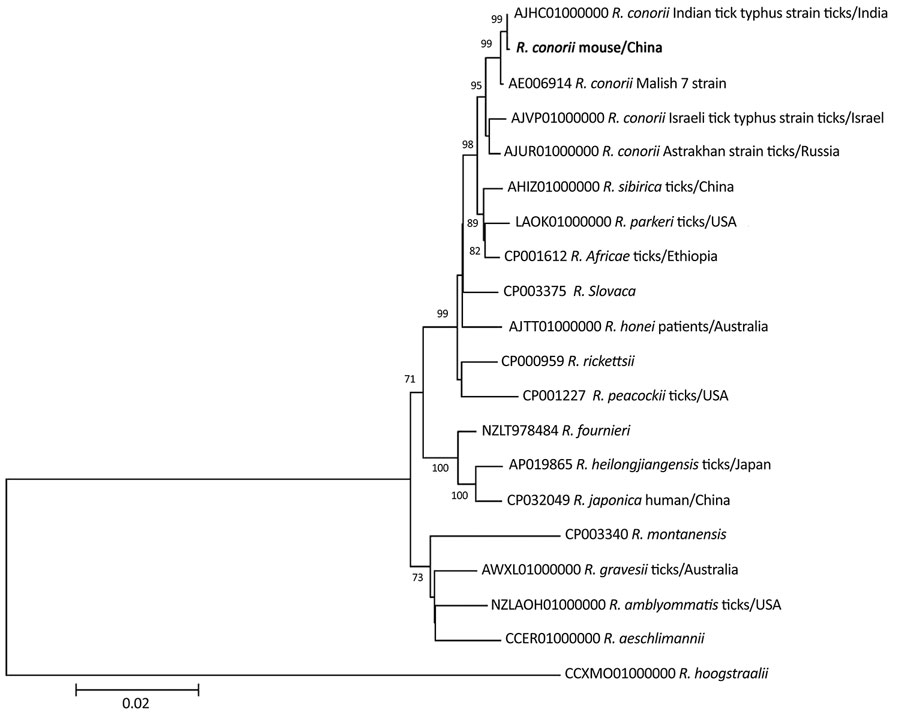Volume 28, Number 12—December 2022
Dispatch
Natural Mediterranean Spotted Fever Foci, Qingdao, China
Figure 2

Figure 2. Phylogenetic tree of Rickettsia conorii identified from natural Mediterranean spotted fever foci, Qingdao, China. Bold text indicates R. conorii obtained from a striped field mouse (Apodemus agrarius) captured in 2015. The maximum-likelihood tree is based on the concatenated sequences of rrs, htrA, ompA, and ompB genes of Rickettsia species. Numbers at the nodes indicated the percentage of bootstrap proportions with 1,000 replicates; only bootstrap values >70% are shown. The reference sequences are indicated by the GenBank accession number, name of species, host, and country of isolation. Scale bar indicates nucleotide substitutions per site.
Page created: October 17, 2022
Page updated: November 21, 2022
Page reviewed: November 21, 2022
The conclusions, findings, and opinions expressed by authors contributing to this journal do not necessarily reflect the official position of the U.S. Department of Health and Human Services, the Public Health Service, the Centers for Disease Control and Prevention, or the authors' affiliated institutions. Use of trade names is for identification only and does not imply endorsement by any of the groups named above.